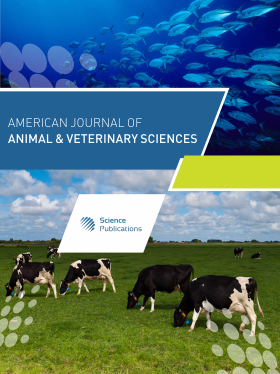Cattle Raising Practices in North-West Cambodia
- 1 Department of Animal Science, Faculty of Agriculture and Food Processing, National University of Battambang, Cambodia
- 2 Department of Community Development, Faculty of Sociology and Community, National University of Battambang, Cambodia
- 3 Documentary Center, National University of Battambang, Cambodia
- 4 Department of Management, Faculty of Art Humanity and Education, National University of Battambang, Cambodia
- 5 Department of Management, Faculty of Business Administration and Tourism, National University of Battambang, Cambodia
Abstract
We aimed to assess current cattle farming practices in northwest Cambodia in terms of economy, practical management, productivity, and sustainability. The study sites were selected in four provinces (Pursat, Battambang, Pailin, and Banteay Meanchey) with 316 cattle livestock farmers interviewed as representative samples using systematic sampling. A stratified sampling method was utilized. Data were analyzed and descriptive statistics was used to quantify and summarize the data. The statistical significance of the mean differences between the data sets was determined using cross-tabulation and frequency to verify its variance. The univariate was tested for the normal distribution. The Pearson correlation was used to evaluate the annual income between cattle local breed-crossbred and infectious diseases. The result elucidated that 90.51% were males and 9.49% were females. Most farmers' education is in primary school (61.71%) followed by no education (18.04%), secondary school (14.24%), and 6.01% for high school education. Livestock farmers in northwest Cambodia had some constraints based on animal feed sources, insufficient labor, technical management, and infectious diseases. However, Livestock farmers are still able to earn approximately 500-1,500 US dollars from their investigations annually. Separately, Livestock farmers who raise crossbred cattle have the opportunity to earn more than local breed cattle farmers, approximately 8,000 US dollars annually. Annual sales of crossbred had a very high positive correlation with the total revenue of crossbred cattle and were statistically significant (r = 0.91, p<0.001) and annual sales of local breeds were moderately positive (r = 0.67, p<0.001). Thus, Cattle farmers who raise cattle are the main contributors to enhancing livelihood incomes. So, crossbred cattle have been encouraged in northwest Cambodia.
DOI: https://doi.org/10.3844/ajavsp.2024.426.434

- 3,510 Views
- 1,495 Downloads
- 0 Citations
Download
Keywords
- Constraint
- Crossbred
- Local Breed
- Northwest Cambodia
